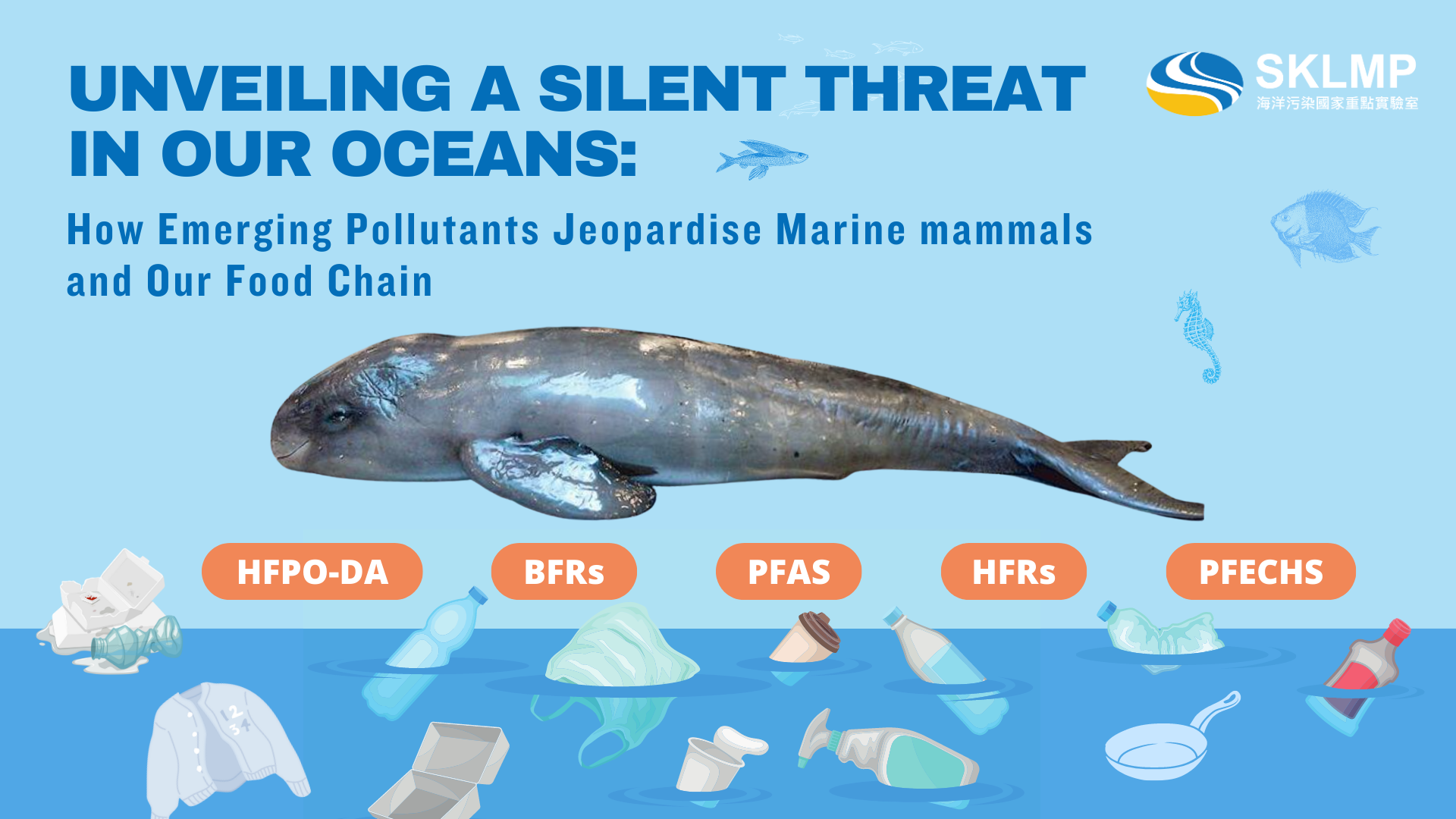Unveiling a Silent Threat in Our Oceans: How Emerging Pollutants Jeopardize marine mammals and Our Food Chain

Dolphins and whales living in Hong Kong waters have long faced health threats, and the emergence of new persistent organic pollutants (POPs) could potentially lead to contamination of the food chain.
Professor Kenneth Mei Yee Leung, Director of the State Key Laboratory of Marine Pollution (SKLMP) at City University of Hong Kong, along with SKLMP members Professor Paul K. S. Lam, Dr. Brian C. W. Kot, and Dr. Yuefei Ruan, collaborated on research regarding the concentrations and long-term variations of POPs in local marine mammal bodies. Two papers were published in May and June of this year in the journal "Environmental Science & Technology."
The research team's latest findings show that compared to the regulated and significantly reduced polybrominated diphenyl ethers (PBDEs), emerging POPs such as per- and polyfluoroalkyl substances (PFAS) and halogenated flame retardants (HFRs) are present in higher concentrations globally in the liver and skin fat samples of stranded white dolphins and finless porpoises in Hong Kong. These pollutants can potentially lead to reproductive injury in marine mammals, posing potential health risks. The concentrations of these pollutants also multiply along the food chain and ultimately accumulate in human bodies.
In another study conducted by the team from 2012 to 2018, 25 white dolphin and 72 finless porpoise tissue samples were collected for chemical analysis. The results revealed that both species contained various emerging organic chemicals, including concentrations of two emerging organic pollutants, PFECHS and HFPO-DA, which increased by 2.8 times and 5.6 times, respectively.
Today, there is a wide range of emerging POPs extensively used in various industrial and consumer products, with a substantial portion of them lacking effective regulation. The environmental and human impacts of these emerging pollutants could outweigh those of legacy POPs. Relevant authorities should promptly formulate laws and regulations to minimize the harm of such pollutants to the environment.